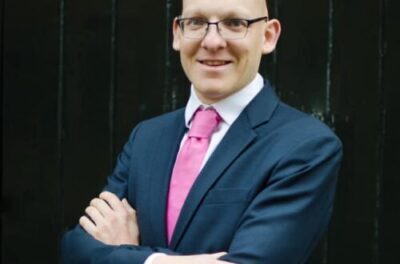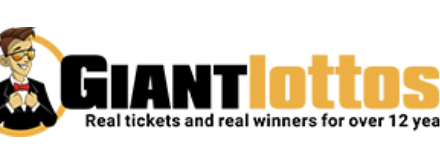Renowned marketing consultant, Michael Boise McCormick, boasts a decade-long impressive career in marketing studded with considerable achievements. He has carved a niche in marketing through his expertise in strategic planning, product launches, and brand value enhancement. This expertise has seen him become a trusted advisor whose contributions have driven businesses toward unprecedented growth and expansion. Steeped in his ability to craft innovative marketing strategies tailored to his clients’ unique needs, McCormick’s successful career is a testament to his visionary planning and practical execution. He is instrumental in helping businesses navigate complex markets, capitalize on emerging trends, and outperform their competitors.
One of McCormick’s standout achievements includes steering struggling businesses back to profitability. His adept marketing skills have enabled numerous firms to address issues such as inadequate cash flow and stagnant growth rates, subsequently realizing revenues above one million dollars. These feats are largely underpinned by his profound understanding of consumer behavior, market dynamics, and industry trends which catalyze revenue growth and long-term continuity. In addition to molding successful businesses, McCormick is actively involved in philanthropic activities and upholds a high level of social responsibility. He champions environmental conservation causes and funds charities combating climate change as he recognizes the urgency of these global issues. Part of his commitment to the environment involves spearheading initiatives to raise public awareness and promote environmentally-friendly behavior. As a marketing maven, McCormick constantly strives to push the innovation boundaries within his sphere. Armed with a commitment to stay abreast of industry trends, technological advancements, and best practices, he provides unparalleled value to those who recruit his services. McCormick’s extensive experience, strategic expertise, and drive for change make him a distinguished figure in the industry.
Can you share a specific example of a time when you utilized innovative marketing strategies to significantly increase market share for a client? What were the key elements of your approach, and how did it contribute to their success?
Absolutely, one standout example was when I introduced a gamified loyalty program for a client in the retail sector. By leveraging mobile app technology and social media integration, I not only incentivized repeat purchases but also encouraged user-generated content sharing. This not only boosted customer engagement but also attracted new customers through word-of-mouth referrals. The key was creating a seamless and enjoyable experience that resonated with our target audience’s preferences and behaviors.
In your opinion, what are the most effective channels for reaching and engaging with target audiences in today’s rapidly evolving digital landscape? How do you stay ahead of emerging trends to ensure your marketing strategies remain innovative and effective?
Social media works perfectly in engaging with customers. By continually monitoring consumer behavior and industry trends, I have time and again helped adapt company strategies to capitalize on emerging opportunities and engage with audiences in meaningful ways. Staying ahead, from my experience, requires a combination of agility, creativity, and a deep understanding of evolving consumer preferences.
Can you discuss a situation where you faced a particularly challenging market environment or competitive landscape? How did you leverage innovation in your marketing efforts to overcome these obstacles and drive growth for your client?
There was a time I was involved in revitalizing a client’s brand in a highly competitive market saturated with established players. I approached this by repositioning the brand as a disruptor through bold storytelling and experiential marketing tactics. By leveraging interactive pop-up events and strategic partnerships, I was able to generate buzz and differentiate our client from competitors. The key was creating an emotional connection with consumers and positioning the brand as a catalyst for positive change.
Innovation often involves taking calculated risks. Can you describe a time when you introduced a novel marketing concept or campaign that may have been perceived as unconventional at first? How did you navigate any resistance or skepticism, and what were the outcomes?
I once launched a guerrilla marketing campaign that involved staging flash mobs in unexpected locations to promote a client’s product. While initially met with skepticism, the campaign garnered widespread attention and viral traction, ultimately exceeding our client’s expectations. By taking calculated risks and thinking outside the box, I was able to create memorable experiences that resonated with our target audience and elevated our client’s brand.
How do you approach the process of identifying untapped market opportunities for your clients? Can you provide an example of a successful initiative where you identified and capitalized on a previously overlooked segment or niche?
Identifying untapped market opportunities requires a comprehensive understanding of consumer needs and behaviors. One notable success involved identifying a niche segment within the health and wellness industry that was underserved by existing products. Through market research and consumer insights, I developed a tailored product offering and targeted marketing campaign that resonated with this audience. The result was a significant increase in market share and brand loyalty, demonstrating the power of strategic segmentation and targeting.
With the proliferation of data analytics and AI-driven marketing technologies, how do you balance the use of advanced tools with the need for creativity and human insight in your marketing strategies?
While advanced technologies provide valuable insights, I believe it’s crucial not to overlook the human element of storytelling and emotional connection. By integrating data-driven decision-making with creative ideas, I can develop campaigns that resonate with audiences on a deeper level and drive meaningful engagement. I realized early that the key is finding the right balance between quantitative analysis and qualitative understanding to deliver impactful results.
Building brand value is essential for long-term success. Can you share your approach to enhancing brand perception and loyalty through innovative marketing initiatives? What metrics do you use to measure the effectiveness of these efforts?
I have always taken a holistic approach that extends beyond traditional marketing tactics. By focusing on delivering exceptional customer experiences and fostering authentic connections, I was able to build trust and loyalty with our target audience. This usually involves aligning brand messaging with core values and consistently delivering on brand promises across all touchpoints. By measuring brand sentiment, customer satisfaction, and other relevant metrics, I am usually able to gauge the effectiveness of our efforts and make data-driven adjustments to optimize brand perception and loyalty.
In today’s hyperconnected world, authenticity and transparency are increasingly valued by consumers. How do you ensure that your marketing campaigns resonate with audiences on a genuine level while still driving business objectives?
I always tell those I work with that authenticity and transparency are non-negotiables in today’s consumer-driven landscape. That’s why I always prioritize authenticity by ensuring that our marketing campaigns are genuine reflections of our brand values and commitments. By fostering open communication and transparency, I have been able to build trust with our audience and cultivate long-lasting relationships.
Can you discuss a time when you successfully repositioned a struggling product or brand in the market through innovative marketing strategies? What are the key factors that contributed to the turnaround, and how did you measure its impact?
Repositioning a struggling product or brand requires a strategic approach that addresses underlying challenges and resonates with target consumers. In one instance, I successfully repositioned a declining brand by conducting extensive market research and identifying key pain points and opportunities for differentiation. Through a comprehensive rebranding effort and targeted marketing campaign, I was able to reignite consumer interest and drive sales growth. By closely monitoring market trends and consumer feedback, I was able to adapt our strategies and position the brand for long-term success.
As a marketing expert, you’ve demonstrated a commitment to social responsibility and environmental conservation. How do you incorporate these values into your marketing strategies, and what role do they play in shaping consumer perceptions and brand reputation?
Over the years, I have learned that incorporating social responsibility and environmental conservation into our marketing strategies is not only a moral imperative but also a strategic advantage. By aligning brands with causes that resonate with the target audience, I have helped clients differentiate themselves in the market and foster deeper connections with consumers. This usually involves integrating sustainability into their product development, packaging, and messaging while actively supporting environmental initiatives and organizations. By demonstrating commitment to social and environmental responsibility, I have managed to shape the reputations of many brands, attract socially conscious consumers, and drive positive change.




